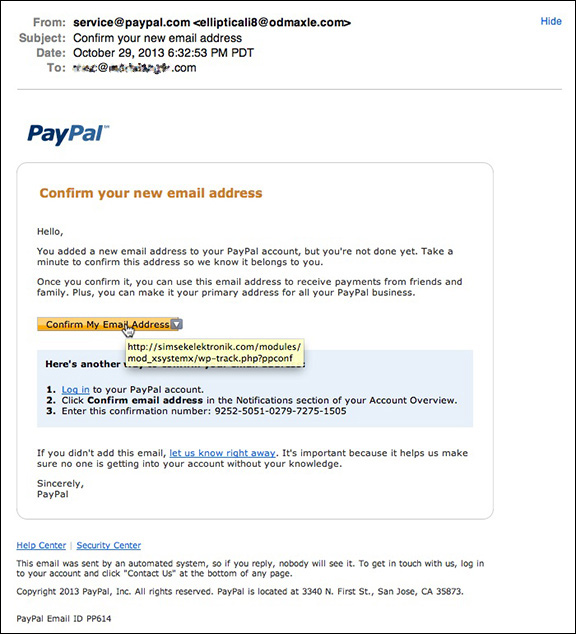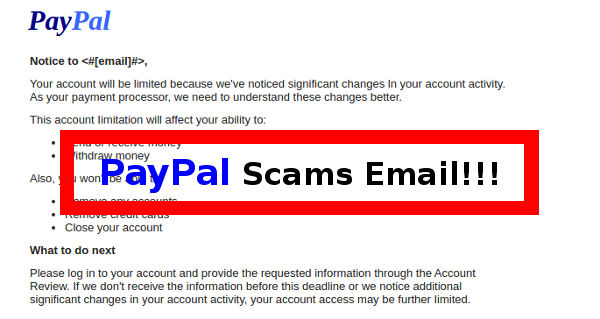
- PAYPAL SPAM EMAIL DRIVER
- PAYPAL SPAM EMAIL VERIFICATION
- PAYPAL SPAM EMAIL PASSWORD
- PAYPAL SPAM EMAIL ZIP
PAYPAL SPAM EMAIL PASSWORD


PAYPAL SPAM EMAIL DRIVER
Remember, previously, iCloud phishing scam a used similar trick to ask users to upload their personal documents like passport identity card and driver license. To verify their identity, users are also asked to either upload a copy of their passport, or identity card and driver license. To get their hand on this information scammers ask users to enter bank name, bank account number, bank code, bank login ID, password and password for their banking card. Moreover, if the user is successfully tricked into giving away their credit card data, they are taken to a page that asks them to verify their bank account details and identity.
PAYPAL SPAM EMAIL VERIFICATION
PayPal never asks for such dataįurthermore, it takes users to a page that asks users to verify their credit card details including credit card number, cardholder name, expiration date and its verification code (CVV).
PAYPAL SPAM EMAIL ZIP
Upon signing in with their credentials user is taken to another page and ask to enter details like personal address, city, state/county, zip code, country, phone number tax identification code and date of birth. It then takes them to a fake login page that looks like an official PayPal page. Once the user clicks on the link in the email that asks them to verify if it’s their account, it claims to detect suspicious activity but in reality the information belongs to the user’s current login destination. It could be that scammers are using fake senders or the email is spoofed, but usually, an email sent from a fake email sender goes straight into spam folder rather than the inbox. However, the same email is being used for scams since 2010. Therefore, it is unclear how cybercriminals are using an official PayPal email address to carry phishing scams.

For instance, the screenshot below is an official PayPal email sent to a user to confirm their account’s email address. The email comes to user inbox rather than going to spam folder while another important fact about this scam is that the email is being delivered by which is a genuine email address officially used by PayPal to contact users. The subject of this phishing email is “re: reminders: Your PayPal ID information” which means the sender is trying to trick the users into believing that the email is part of PayPal resolution center and deals with an ongoing matter. “If you did not make these changes or you believe an unauthorized person has accessed your account, you should change your password as soon as possible from your PayPal ID account page,” says the email. It starts with an email that informs users about a change in their “Billing Information,” and directs that in case they didn’t make the supposed change they need to click on a link hidden behind a URL shortener to verify that it’s not them. Usually, phishing scams look for users’ login credentials but recently, discovered a scam that aims at stealing everything from a PayPal user, and that includes their PayPal login credentials, address, credit card, banking data, passport, identity card, and driver license. Nothing is surprising about a PayPal phishing scam but what might raise some eyebrows is the fact that these scams are becoming sophisticated day by day.


 0 kommentar(er)
0 kommentar(er)
